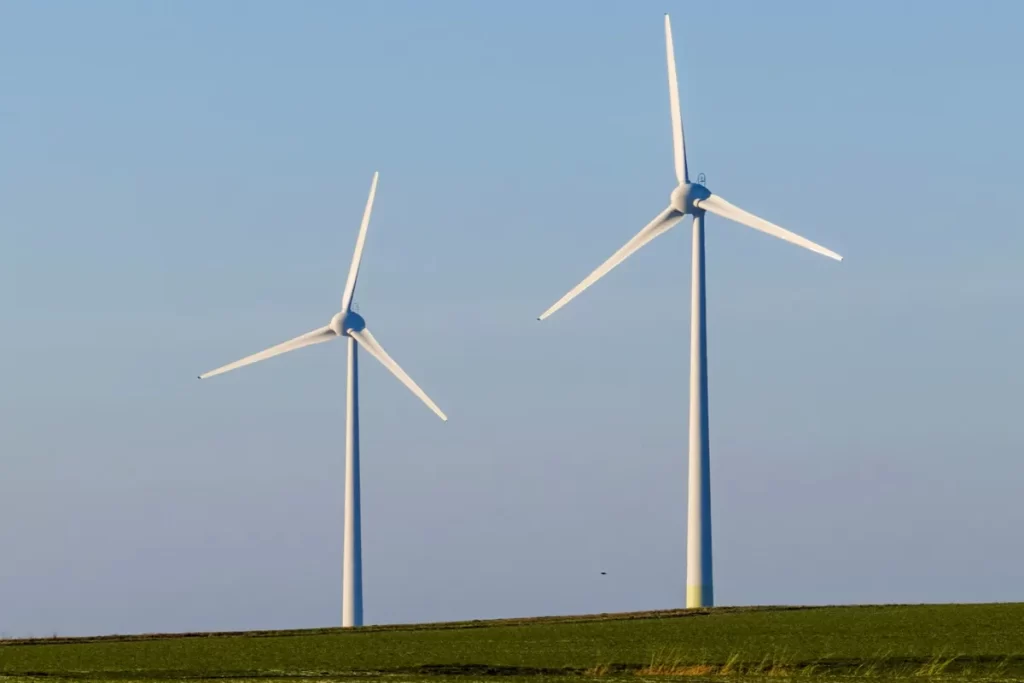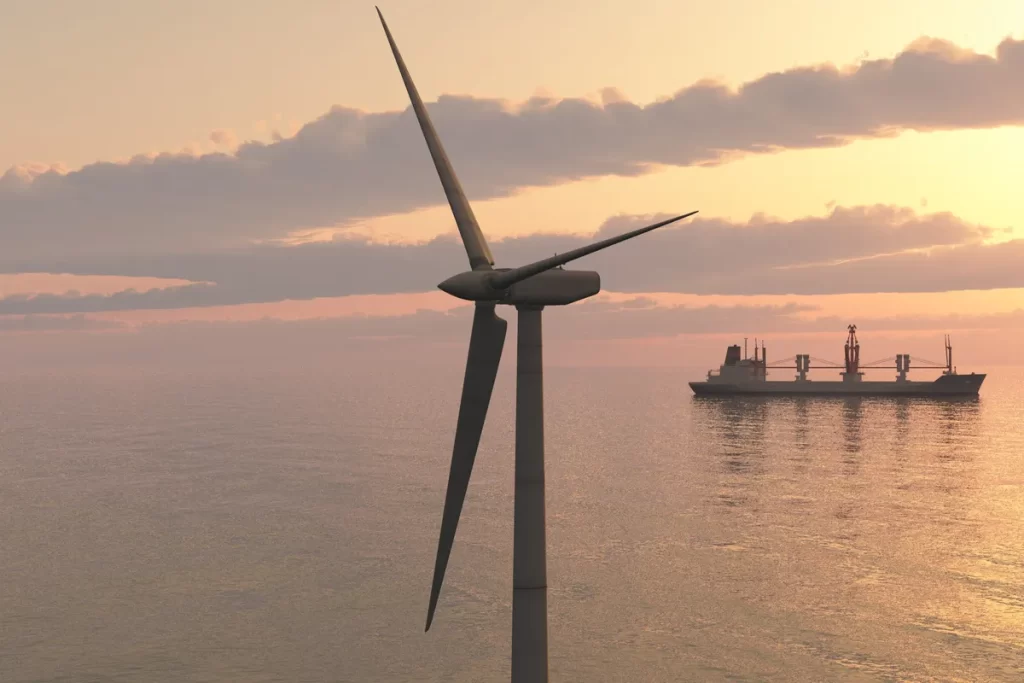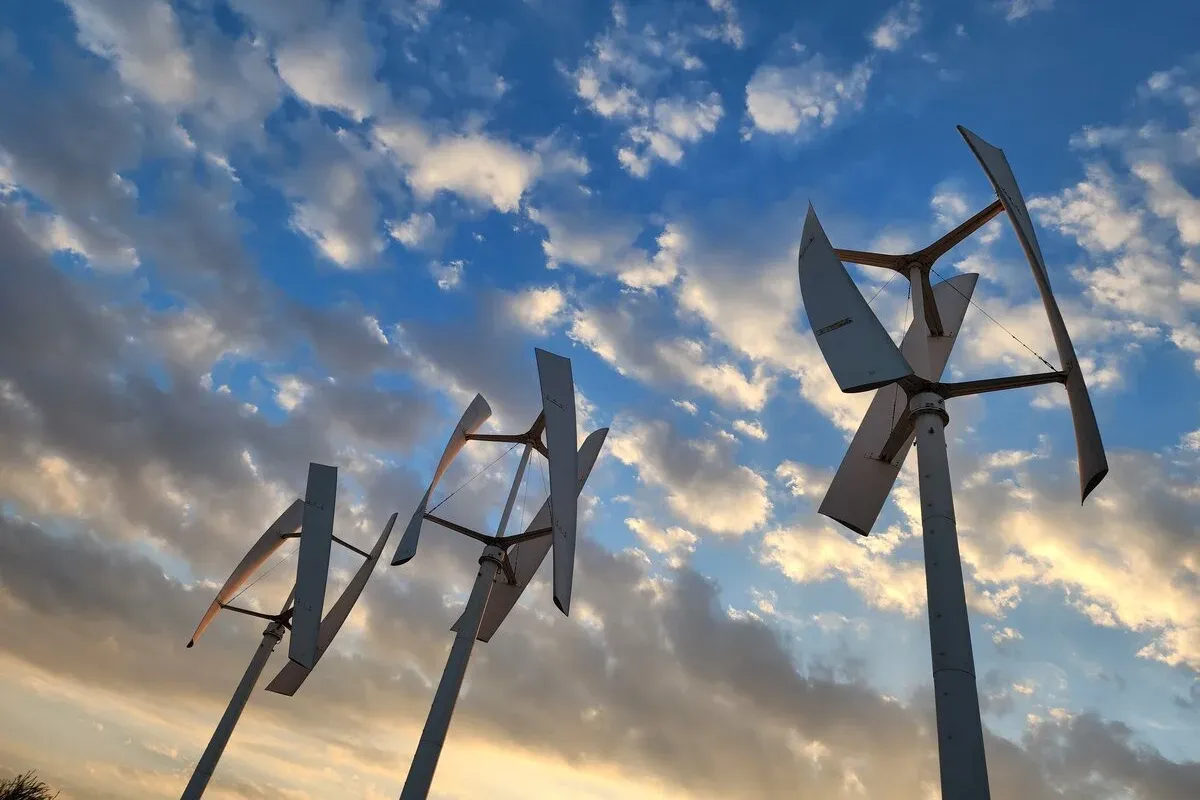In today’s world, the need for renewable and sustainable energy sources has never been more apparent. As we strive to reduce our carbon footprint and combat climate change, we’re increasingly turning to alternative methods of power generation. One such option that has gained immense popularity over the years is wind power. Thanks to its abundant and clean nature, wind energy has the potential to significantly reduce our reliance on fossil fuels and contribute to a greener planet.
But have you ever wondered how those towering wind turbines you see along coastlines and rural landscapes actually work? In this blog post, we’ll take you through the basics of wind turbine technology, breaking down the process in simple terms so that you can better understand how we harness the power of the wind to generate electricity. Join us as we explore the fascinating world of wind energy and learn how it’s helping to shape a more sustainable future.
The Basic Principle of Wind Energy
Wind energy, a renewable and eco-friendly power source, harnesses the natural force of the wind to generate electricity. At its core, the wind is simply moving air created as a result of the Earth’s attempt to maintain a balanced temperature. The sun’s rays heat the Earth unevenly, causing air to expand over warmer areas, like dry land. As this warm air rises, cooler, denser air rushes in to replace it, creating the wind we experience (Source).
This movement of air contains kinetic energy, which can be transformed into both mechanical and electrical energy. The driving force behind this process is the uneven heating of the Earth’s surface by the sun, which creates air currents in the atmosphere (Source). Wind turbines cleverly capitalize on this natural phenomenon by using the wind to generate electricity rather than consuming electricity to create wind like a fan. As the wind propels the turbine’s blades in a circular motion, it rotates a central rotor. This rotation drives a generator, ultimately converting the kinetic energy of the wind into usable electricity (Source).
Key Components of a Wind Turbine
Wind turbines consist of several essential parts, each playing a critical role in capturing the power of the wind and converting it into electricity. In this section, we’ll provide a brief overview of these components and their functions.
- Rotor Blades: The most visible part of a wind turbine, the rotor blades are shaped like airfoils and designed to catch the wind. As the wind blows, it pushes the blades, causing them to rotate and turn the rotor. The number of blades can vary, but modern wind turbines typically have three.
- Hub: The hub is the central component that connects the rotor blades to the main shaft. It ensures the transfer of the blades’ rotational energy to the rest of the turbine.
- Nacelle: The nacelle is a protective housing located atop the tower, which contains several essential components:
- Gearbox: The gearbox increases the rotational speed of the main shaft, enabling the generator to produce electricity efficiently.
- Generator: As the main shaft turns, the generator converts the mechanical energy into electrical energy.
- Controller: The controller monitors the wind turbine’s operation, adjusting its performance to maximize efficiency and protect the turbine from potential damage due to high winds or other factors.
- Tower: Supporting the nacelle and rotor, the tower is a tall, sturdy structure that elevates the wind turbine to capture stronger, more consistent winds at higher altitudes.
- Foundation: Anchoring the wind turbine to the ground, the foundation provides stability and ensures that the entire structure remains secure, even in extreme weather conditions. Foundations can be constructed using concrete, steel, or a combination of both, depending on the specific requirements of the wind turbine and the site.

How Wind Turbines Generate Electricity
In this section, we’ll explore the step-by-step process of how wind turbines convert the power of the wind into electricity, highlighting the essential roles played by each component.
The Role of Wind in Turning the Rotor Blades
Wind turbines are strategically positioned to capture the maximum amount of wind energy. As the wind blows, it pushes against the aerodynamically designed rotor blades, causing them to rotate. This rotation is the first critical step in generating electricity.
How the Rotation of the Blades Drives the Gearbox and Generator
The rotation of the blades is transferred to the main shaft via the hub. As the main shaft rotates, it drives the gearbox, which increases the rotational speed to the levels required for efficient electricity generation. The gearbox then transfers this increased rotational speed to the generator.
The Process of Converting Mechanical Energy into Electrical Energy
Inside the generator, the rotation of the shaft creates a magnetic field, which induces an electric current. This conversion of mechanical energy into electrical energy is based on the principles of electromagnetic induction. The electricity generated is then transformed to the appropriate voltage for distribution, either to the power grid or a local distribution system.
Transferring Electricity to the Grid or Local Distribution System
Once the electricity is generated, it needs to be transmitted to consumers. For large-scale wind farms, the electricity is typically sent to the power grid, where it’s mixed with energy from other sources and distributed to homes and businesses. For smaller-scale installations, such as those found on residential properties or small businesses, the electricity can be fed directly into a local distribution system or stored in batteries for later use.
Types of Wind Turbines
Wind turbines come in various shapes and sizes, each designed to serve specific needs and environments. In this section, we’ll discuss the two primary types of wind turbines, their advantages and disadvantages, and how they differ in terms of design and functionality.
Horizontal-Axis Wind Turbines (HAWT)
Horizontal-axis wind turbines (HAWTs) are the most common type of wind turbine and what most people picture when they think of wind energy. These turbines have a horizontal main shaft and rotor, with blades that face into the wind. Key features and considerations of HAWTs include:
- Efficient energy capture: HAWTs generally have a higher efficiency rate compared to VAWTs due to their ability to capture wind from any direction.
- Tall towers: HAWTs are typically mounted on tall towers to access stronger, more consistent winds at higher altitudes.
- Yaw mechanism: To maximize energy capture, HAWTs are equipped with a yaw mechanism that adjusts the direction of the nacelle, ensuring the blades always face into the wind.
Vertical-Axis Wind Turbines (VAWT)
Vertical-axis wind turbines (VAWTs) have a vertical main shaft and rotor, with blades arranged around the central axis. While less common than HAWTs, they offer some unique advantages, particularly in urban environments or areas with turbulent winds. Key features and considerations of VAWTs include:
- Omni-directional: VAWTs can capture wind from any direction without needing to reorient themselves, making them suitable for areas with variable or turbulent wind patterns.
- Lower height: VAWTs can be installed closer to the ground, which may be advantageous in areas with height restrictions or aesthetic concerns.
- Less efficient: VAWTs generally have lower efficiency rates than HAWTs due to their design, and they may not perform as well in high-wind environments.
Each type of wind turbine has its own set of advantages and disadvantages, making them more or less suitable for specific applications and environments. When selecting a wind turbine, it’s essential to consider factors such as wind patterns, available space, and aesthetic concerns to determine the best option for a given situation.

Factors Affecting Wind Turbine Performance
Several factors can influence the performance and efficiency of wind turbines. In this section, we’ll discuss these factors and how they impact the overall effectiveness of wind energy generation.
Wind Speed and Consistency
Wind speed is a crucial factor in determining the performance of a wind turbine. The stronger and more consistent the wind, the more electricity a turbine can generate. Wind turbines have a specific range of wind speeds in which they operate efficiently, typically starting at a minimum cut-in speed and stopping at a maximum cut-out speed to protect the turbine from potential damage due to high winds.
Turbine Location (Onshore vs. Offshore)
The location of a wind turbine can significantly impact its performance. Offshore wind turbines often have access to stronger, more consistent winds, resulting in higher electricity output. Onshore wind turbines, while generally more accessible and easier to maintain, may experience more variable and weaker winds. Site selection plays a critical role in maximizing the efficiency and output of wind turbines, requiring careful assessment of factors such as wind patterns, terrain, and potential obstructions.
Turbine Size and Design
The size and design of a wind turbine can also influence its performance. Larger turbines with longer blades can capture more wind, leading to higher electricity output. However, they may also require more substantial investments in infrastructure and maintenance. Smaller turbines, on the other hand, can be more suitable for residential or small-scale applications, but they may not generate as much electricity. The design of the rotor blades, nacelle, and other components can also impact the efficiency and performance of a wind turbine, making it essential to select a design tailored to the specific needs and environment of the installation site.
Conclusion
Wind turbines offer a fascinating and innovative way to harness the power of the wind, transforming it into clean, renewable electricity. In this blog post, we’ve explored the basics of wind turbine technology, from understanding the science behind wind as an energy source to the process of converting that energy into electricity. We’ve also discussed the various types and designs of wind turbines, as well as the factors that impact their performance.
As the world continues to seek more sustainable energy sources, wind power will play an increasingly important role in reducing our reliance on fossil fuels and mitigating the effects of climate change. By understanding how wind turbines work and the factors that influence their efficiency, we can make informed decisions about the adoption and expansion of wind energy in our communities and around the globe. Embracing renewable energy sources like wind power is a crucial step towards a cleaner, more sustainable future for all.
Check out our other articles on the topic:
Are Wind Turbines Cheaper than Solar Panels?
Can Wind Turbines be Used for Homes?
What Country has the Most Wind Turbines?
How Much Does a Windmill Cost?
Offshore Wind Turbines: Exploring the Pros, Cons, and Future Developments

